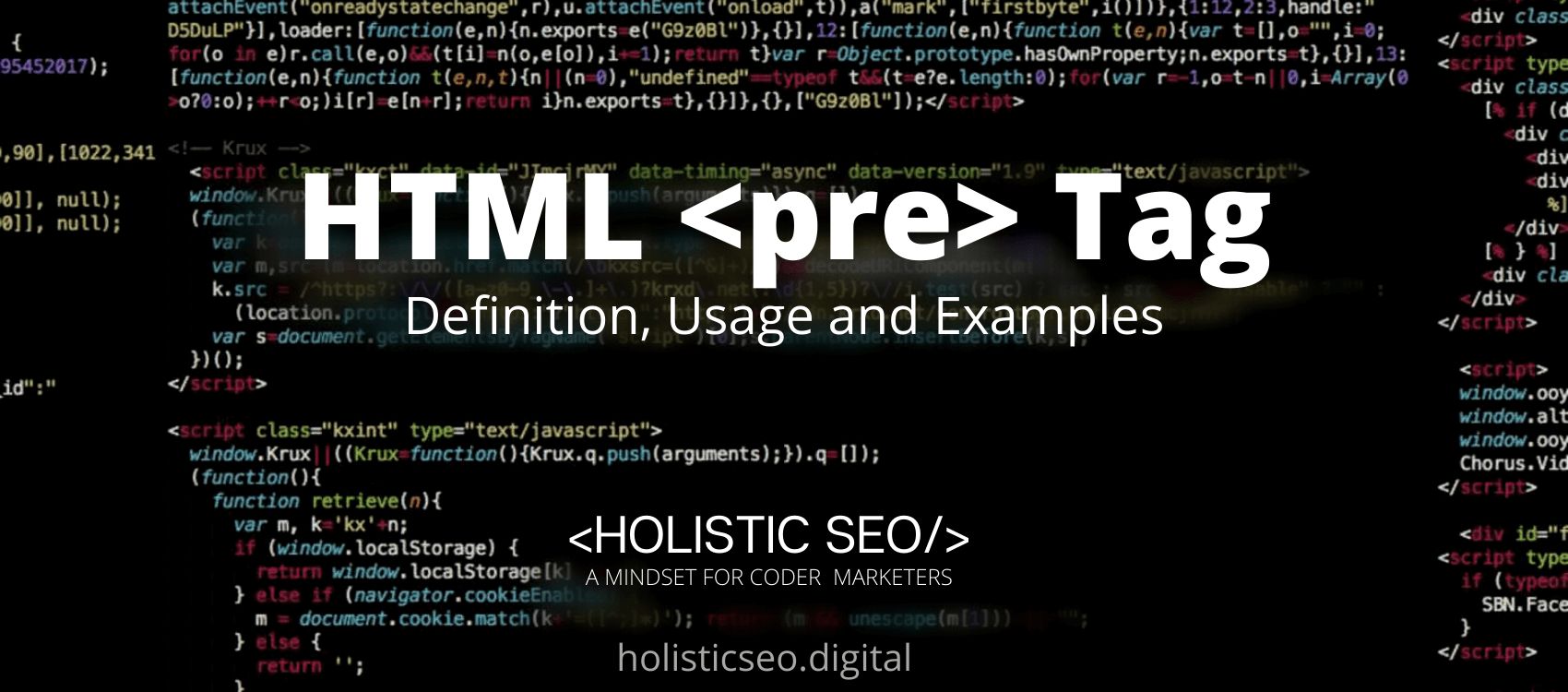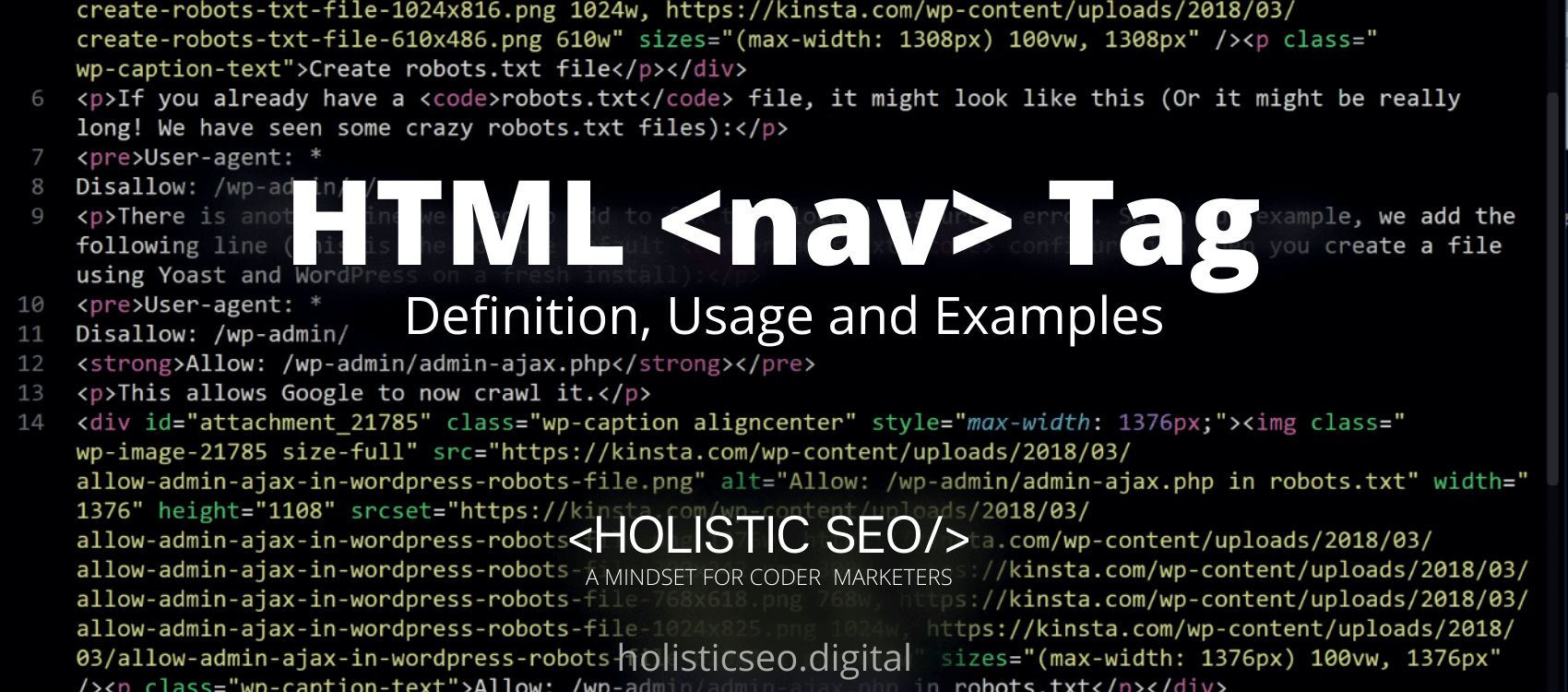The <pre> HTML element specifies the preformatted text that should be displayed exactly as it is written in the HTML file. Typically, non-proportional or monospaced fonts are used to render the text. The <pre> HTML Tag is used to define a block of preformatted text that retains text spaces, line breaks, tabs, and other formatting characters that web browsers ignore. The <pre> HTML Tag is part of the formatting Tags category in HTML Element Reference. The attributes of the <pre> HTML Tag are global attributes and event attributes.
<pre> code block example to learn how it works is given below.
<pre>
Text
</pre>The second example usage of the “<pre>” code block example is given below.
<pre>Google is a
search engine
that organizes
the world's
information
</pre>What is <pre> HTML Tag?
The <pre> HTML Tag is often used to define a block of preformatted text that retains text spaces, line breaks, tabs, and other formatting characters that web browsers ignore. The <pre> HTML Tag’s text is displayed in a fixed-width font by default, but it can be customized using CSS. A beginning and an end tag are required for the <pre> HTML Tag.
How to Use <pre> HTML Tag?
To use the <pre HTML Tag, the web developer should provide preformatted text between the <pre> and </pre> HTML Tags. The text in the HTML source code will be displayed exactly as written.
Example Usage of <pre> HTML Tag?
The following example of usage of <p> HTML Tag is given below.
<pre>
Holistic SEO
A MINDSET FOR CODER MARKETERS
</pre>What are the Attributes of <pre> HTML Tag?
There are multiple attributes for the <pre> HTML Tag. The following attributes are listed below.
- Global Attributes: The <pre> HTML Tag supports Global Attributes. All HTML elements, even those not specified in the standard, can have global attributes. This means that any non-standard elements must nevertheless allow certain characteristics, even if using such elements makes the content non-HTML5 compliant.
- Event Attributes: The <pre> HTML Tag supports Event Attributes. The Event Attributes always have a name that begins with “on” and is followed by the name of the event for which it is intended. They specify a script to run when an event of the defined type is dispatched to the element with the specified attributes.
What is the Default CSS Setting for <pre> HTML Tag?
The following is the Default CSS Setting for the <pre> HTML Tag.
pre {
font-size: .5rem;
margin: 0;
}What are the Related other HTML Tags to <pre>?
The other related HTML Tags to <pre> HTML Tag are listed below.
- <acronym> HTML Tag: The <acronym> HTML Tag is related to <pre> HTML Tag because they are both in formatting HTML Tags. The <acronym> HTML Tag is similar to abbreviation tag. The abbreviation is defined using the <acronym> HTML Tag.
- <abbr> HTML Tag: The <abbr> HTML Tag is related to <pre> HTML Tag because they are both in formatting HTML Tags. The <abbr> HTML Tag is used to define abbreviations such as HTML, CSS, and so on.
- <big> HTML Tag: The <big> HTML Tag is related to <pre> HTML Tag because they are both in formatting HTML Tags. The <big> HTML Tag is used to define large text.
- <blockquote> HTML Tag: The <blockquote> HTML Tag is related to <pre> HTML Tag because they are both in formatting HTML Tags. The <blockquote> HTML Tag is used to include quotations from other sources.
- 48 Online Shopping and Consumer Behavior Statistics, Facts and Trends - August 22, 2023
- B2B Marketing Statistics - August 22, 2023
- 38 Podcast Statistics, Facts, and Trends - August 22, 2023



Does “Preformatted” block in WP hurt SEO ranking on search engines?